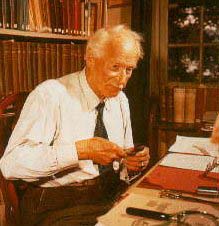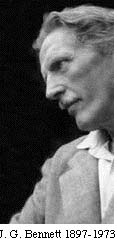 |
 We called our letters to the editor: "Messages in Bottles" long before it was a song and a film, as witness this scan of an old newsletter. The concept is fairly soiled and used up now, what we had in mind was so thouroughly different. A letter from Lindsey Campbell in Scotland was the inspiration for our Centres of Culture and Wisdom article. Here is part of a letter sent to us by Lindsey (please keep in mind that this was written in 1989). Lindsey–if you are out there somewhere, please contact us, we are available at: We ran this ad at the time (Oct, 1989)  Come to Rynachulig on Loch Tay, where many worlds meet. Here you can laugh, cry, talk or be silent and somebody will understand you. Bring your music, art, therapy, vision. All good-hearted oddballs welcome. Centres of Culture and Wisdom
The California post of UWP is presently located in one of the modern world's temporarily protected environments, but not all that far from the inner city where a darker world phenomena seems to be steadily increasing. Those who write books on surviving the "ravening horde" of a post apocalyptic event gleefully point out how a suburb like ours would be quickly over run. But so far, we are not over run, and it might seem we have little to complain about. If one overlooked that many in the world are still deprived, hungry and in danger, worldwide inflation continues to escalate, the geophysical picture is temperamental [whatever face you put on that] and man still does not use the abundance of the earth [increased by his own technology] for the best interests of the global village, it might seem a halcyon time. For sometime now, the California staff have scanned the horizon looking for a place, a large house and land that could make a suitable home for our publishing enterprise and a base for the Undiscovered Worlds Explorers Club. Under the pressure of everyday life, we had for a time lost sight of this and our way had begun to seem very dark indeed. In the midst of such forgetfulness, fortunately, there sometimes comes the tapping at the door to awaken one to fresh and new inspiration. Lindsay Campbell told us that Rynachulig wanted to be developed as a centre of culture and wisdom even as Britain was in ancient times. This fresh voice from the Highlands of Scotland imbued us with fresh inspiration and we talked long into the night discussing the UWP centre again. We went to bed feeling we had defined what we were looking for–a place that possessed a quality very few look for–and our "place" felt very near, perhaps trying to find us. We are convinced it would be good if there were centres of culture and wisdom in all parts of the world. Such "places" are refuges and citadels in times of danger, of course, but we are not intent upon setting up survivalist's camps. Our principle aim would be to provide accommodation for groups and individuals attempting serious spiritual work, to nourish and encourage their endeavor, and to meet them. Meeting may be the most important function the centre will serve, for although people of good will do come together, the atmosphere of the modern world seldom provides the occasion for a genuine "meeting" to take place. Astonishingly, the modern world also provides no "places" for meetings. Such centers, following time honored custom, are always open to all people of good will, which coincides with our own aim of reaching the wider world. Our publications are a means of reaching out beyond ourselves. In practical worldly terms, such a center might house enterprises that would ally themselves with the development of the human spirit, as well as providing space for seminars and retreats, both collective and individual. Over the last few months we have reflected on the role of centres and what qualities and conditions must be present for them to be successful. We are all familiar with the tales of how such places often fail, despite the good intentions of the would be founders. So we addressed ourselves to the issue of why one failed and another succeeded, a question often sought in human psychology and found an answer waiting for us. However beautiful some places may be to the eye, some have a quality that is depressing, forlorn and empty. Often overlooked in the West is the "feel" of a place, a vibrational quality harmonious with the activity that is to take place there. The Javanese have long recognized this concept as rasa, (both good and bad)–a vibration or quality which may emanate from diverse sources and imbue the "place" with a potential for good or ill. We have known this in the West also, at least in small ways, but seldom utilize it, putting economics, or social considerations ahead of the "spirit" of a place. Lindsey's comments on the area of Loch Tay convey a strong feeling of an enchanted "place." John Bennett's autobiography, Witness, contains the following example of what the Javanese call rasa:

C.G.Jung (1875-1961) in his autobiography Memories, Dreams, Reflections, comments on the feel of the tower at Bollingen in an even firmer and more definitive way.
Our centre may have a different function, one cannot always foresee the ultimate purpose of such a place and there is also the concept of the time for such places. But such places do exist, to keep them hidden from the eyes of the world may be the deliberate policy of the unseen guardians of such places. The Javanese routinely seek the consent and cooperation of the guardians, a concept which perhaps only C.G.Jung would have understood. UWP is so far seeking an American Shangri–La, while
extending what help we can to those who are struggling
to found centres elsewhere in the world. So, crew
members, keep a weather eye open for "the place."
|

Copyright© 2004, Undiscovered Worlds Press
|
|

 place for souls from all over the world who were
interested in finding a way to spiritual
enlightenment. (John Bennett continued his work, based on Gurdjieff's ideas and teachings, and as we in Subud know Coombe Springs was to become the launching pad for Subud in the West.)
place for souls from all over the world who were
interested in finding a way to spiritual
enlightenment. (John Bennett continued his work, based on Gurdjieff's ideas and teachings, and as we in Subud know Coombe Springs was to become the launching pad for Subud in the West.)